|
During the
holiday break at the end of December, I went out to the HighlineTrail
site again to collect promising microfossil material. Unfortunately,
it had snowed the day before, and the trail was nearly completely
covered! The photos of the snow are awesome, but it was only
by picking up random (and probably non fossiliferous) material
that I came back with anything. About 35 pounds of rather bland
material was collected, and into the acid baths they went. Here
are the results from about 4 gallons of muriatic acid (dilluted
to 10%) from the collection. Surprisingly, the material had some
excellent fossil in them, however the quantity was pretty low.
Click
on thumbnails below for full size
Bryozoans
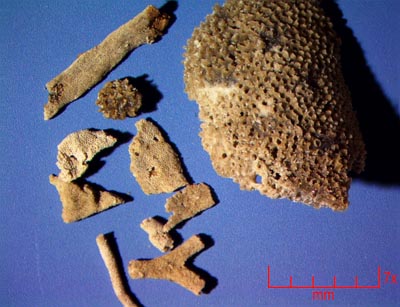
|
Here
seen at low power - 7x, the best of the bryozoans. They include
Y branching, flat and encrusting types. Also some tiny cylindrical
types found. |
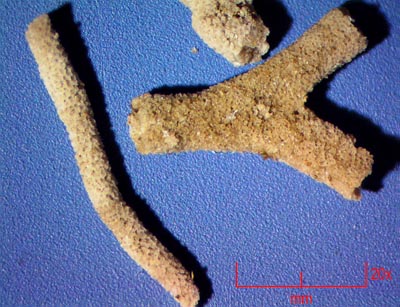
|
At
20x, we see the branching and round soda straw types more clearly.
The pores are very fine indeed on these. |
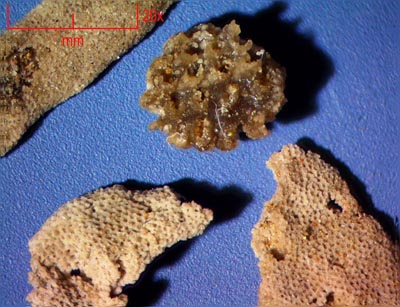
|
Round
and encrusting types as well. Look at the different pore sizes
in the different species. |
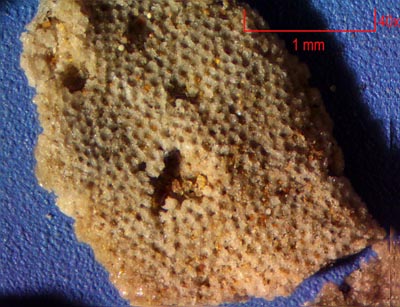
|
40x
close up of one of the encrusting types. Nice sharp pores. Remember
this specimen is only 2mm in size. |

|
The
composition of this globular specimen is quite different than
the other silicified bryozoans. It is closer to what we get with
trilobites and ostracods. |
Mollusks
 |
On
the upper left are two magnificent Astartella subquandrata. But
the rare winged types on the right and below are Parallelodon
anaklassium. (What a totally awesome name!) The single specimen
to the lower right is Palaenucula levatiformis. |
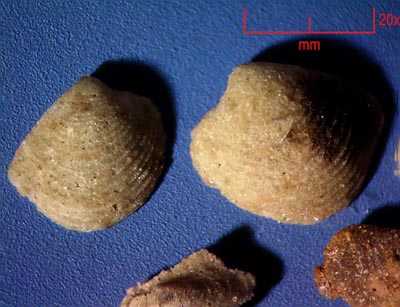
|
Closer
view of Astartella subquandrata. Note the fine lineations. |
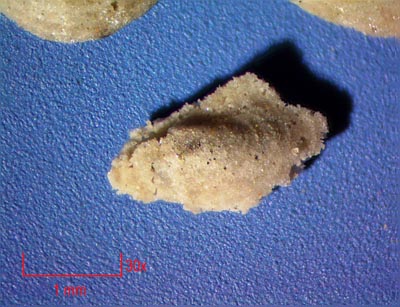
|
Parallelodon
anaklassium at higher power. Preservation is not too good, but
these are SO RARE. |
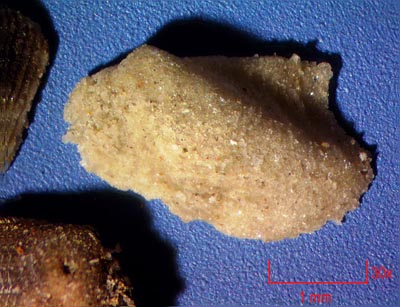
|
Parallelodon
anaklassium, better quality larger specimen. |
Tiny
Quartz Crystals
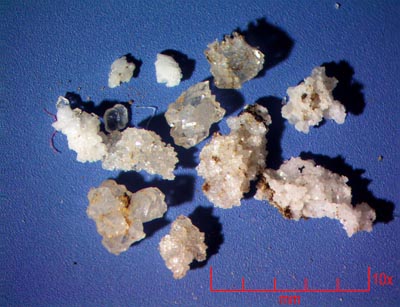
|
These
always show up mixed in, and I suspect that are post diagenetic
in nature. (formed later during fossilization) |
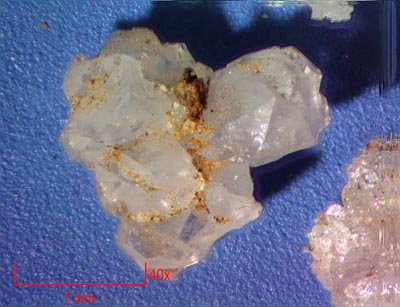
|
40x
view of one of the best crystals. They are scantly larger than
a grain of sand. |
Gastropods

|
Juvinile
Straparollus Euomphalus. Same species as in the Permian Kaibab
formation. |
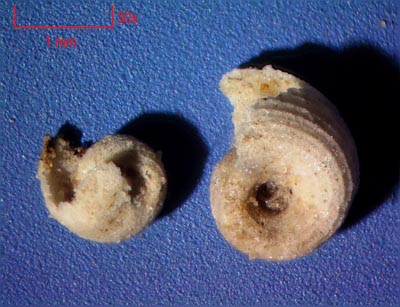
|
Although
these look like Bellerophontids, they are not. These are Knighties
modestus. Gorgeous ribbing! |
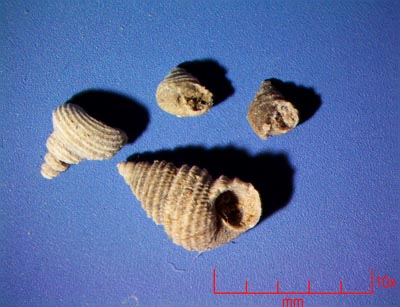
|
Glyptospira
cristulata, one of the most stunning detailed gastropods in the
Fort Apache. The ribbing and ornamentation are outstanding. |
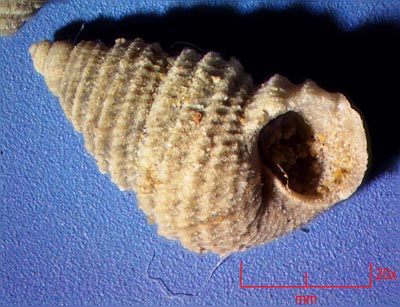
|
20x
view of Glyptospira cristulata. Note the preservation is so good,
the entire aperture is well defined like the animal could crawl
back in. |
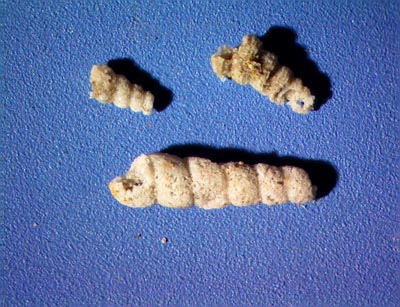
|
Tall
spired turriculate gastropods are found in great abundance most
of the time, here I only found a few. |
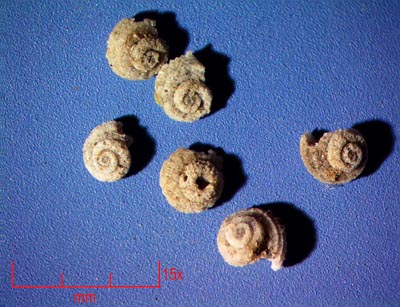
|
Apachella
prodotia, like little honey buns. |
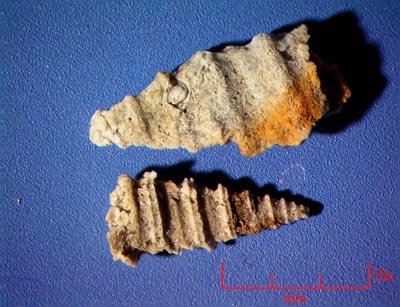
|
Goniasma
terbra. Very flattened here! |
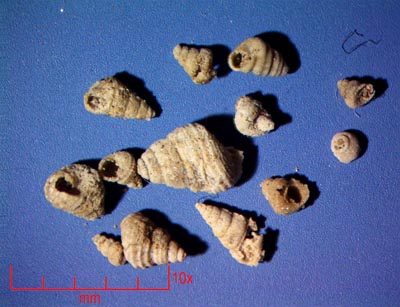
|
Assorted
types mostly Apachella arizonensis. |
Microconchids
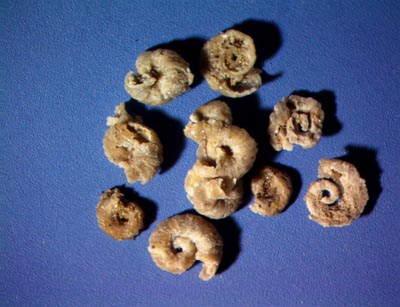
|
They
used to call these "Spirorbis", which now have been
defined as a strictly tertiary genus. In the Permian, both fresh
and salt water annellid worms built these coiled tubes for their
domiciles. They are common in certain outcrops, and lived by
attachment to leaves of live plants. Thus one side is flat. |
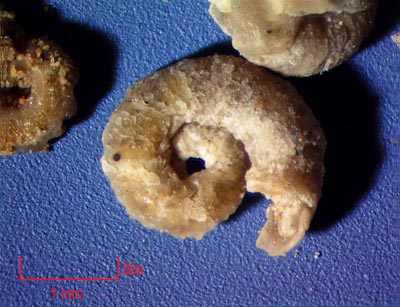
|
At
higher magnification, the spiral pattern is clearly seen. |
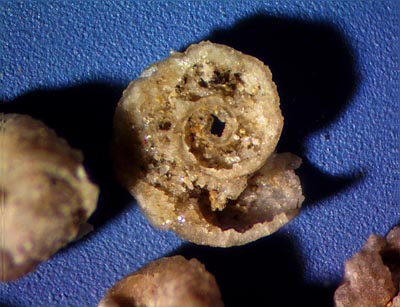
|
One
specimen had a very nice view of the interior spiral. |
Ostracods

|
Ostracods
are "seed shrimp" and are arthropods with an outer
skeleton composed of very different material than molluscs and
gastropods. Thus when they preserve, they have a carmel color
that is unique to them and trilobits. |
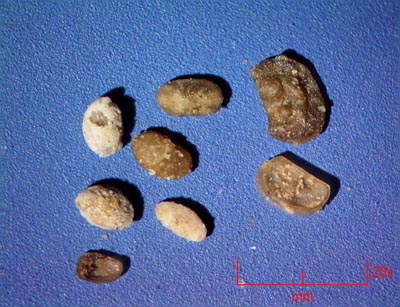
|
The
collection of ostracods from our random samples. |
Scaphopods
& Teleoconchs
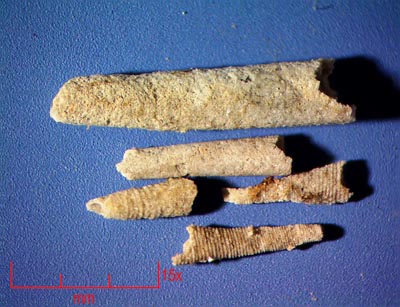
|
One
small scaphopod shell at top, and under it are teleoconchs of
juviniles. |
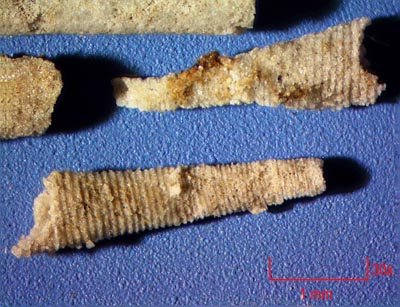
|
Closer
view of nice ribbing on the teleoconchs. When juviniles grow
up, they loose the radial ribbing seen here. |
Trilobites
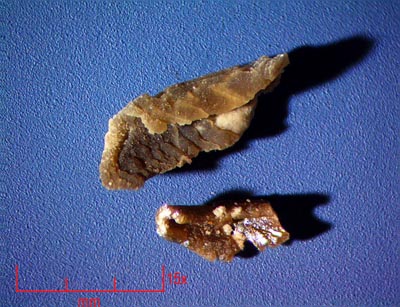
|
Frontal
cranidium ridges of Phillipsia trilobites, most likely ditomopege
sp. Note the caramel color typical of arthropods preserved in
this formation. |
Urchins
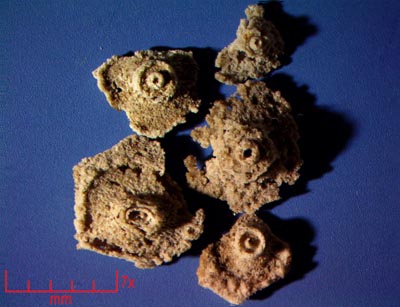
|
Spine
base plates of tiny sea urchins. They would have been marble
sized. |

|
Spine
bases at bottom and some ambulacaral plates from the top of the
test each with two holes in them which are the entry for the
water vascular system. |
Sand

|
There
is a large percentage - like 20% dirt mixed in with the Fort
Apache limestone that was blown in to the sea from the shore.
Most interesting are the larger sand grain sized pieces which
are clear quartz with a red oxide coating. Also, some small pieces
of a black rock with the same red coat appears on the upper right. |
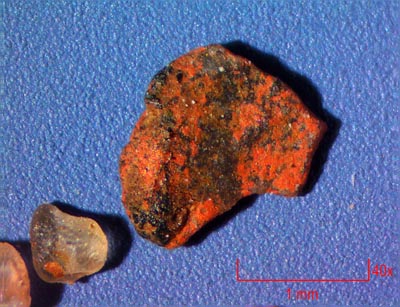
|
Close
up at 40x with the stereo microscope showing the black rock ("rock"
is a loose term here - these are like 1mm in size) - showing
the black base material coated with a reddish iron or manganese
oxide. These are the types of minerals you expect from a Sahara
type desert enviornment. |
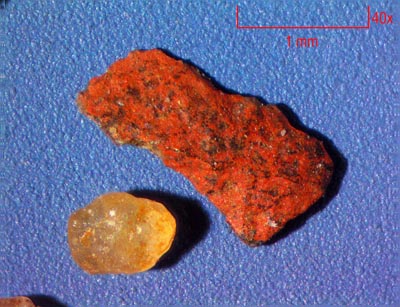
|
Second
piece of "rock" found. The huge white "boulder"
to its left is a grain of sand. |
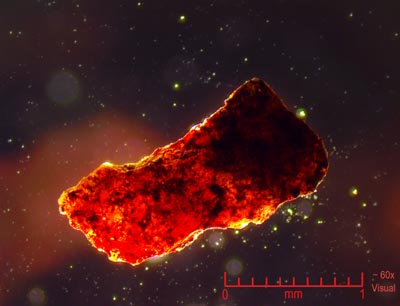
|
We
next took the rock specimens under the high powered transmission
microsocpe for details. This is a dark field illumination and
shows when back lit the rock is semi translucent. |
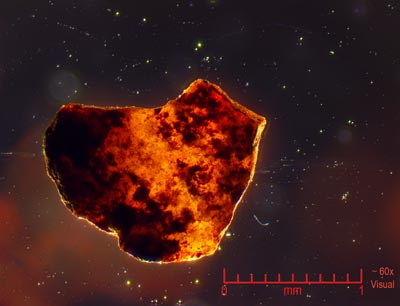
|
The
other "rock" was also translucent. |
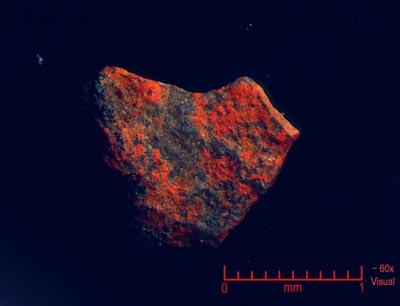
|
Next,
I took that same rock as above and lit it with a bright tungsten
light from above via a fiber optics bundle and attached halogen
light source. |
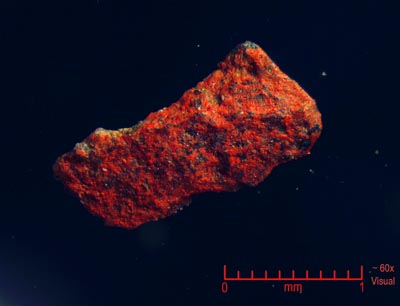
|
For
rock 2, the same setup. |
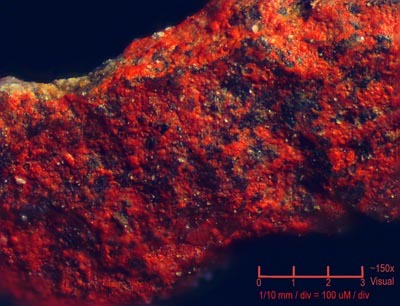
|
Close
up at 150x of rock 2. This is currently the highest magnification
I can go and get the fiber optic illuminator to shine on the
top of the specimens. look at the nice details in the oxide coating. |
|
